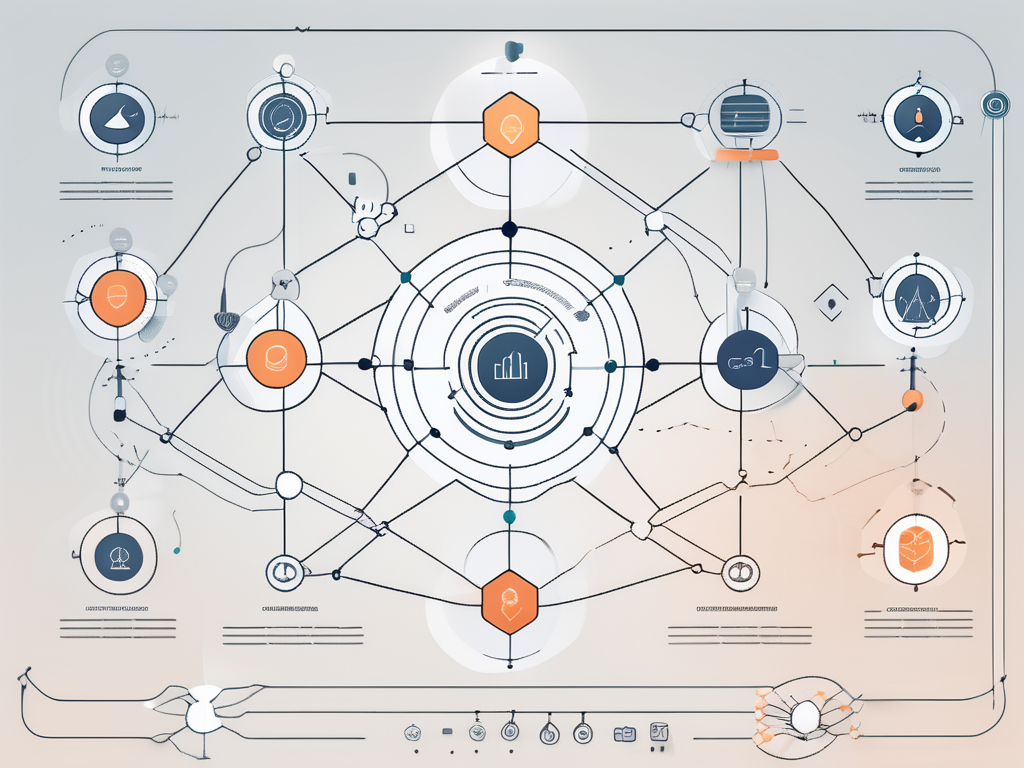How to Personalise Customer Communication in HubSpot for Sales Leaders
How to Personalise Customer Communication in HubSpot for Sales Leaders
In today's competitive business landscape, one of the key aspects that can set sales leaders apart from the rest is their ability to personalise customer communication. Gone are the days of mass emails and generic messages. In order to truly connect with customers and build lasting relationships, sales leaders must embrace the power of personalisation.
Understanding the importance of personalised customer communication
Imagine walking into a crowded room and someone calling you by your name, remembering your previous conversation, and offering solutions tailored specifically to your needs. This is the power of personalised customer communication. It creates a sense of importance and recognition, making customers feel valued and understood. In today's digital age, where customers are inundated with countless marketing messages, personalisation is the key to standing out and making an impact.
Personalised customer communication goes beyond simply addressing someone by their name. It is about truly understanding your customers - their pain points, challenges, and aspirations. By customising your communication based on these insights, sales leaders can foster trust and loyalty, and ultimately drive better results. Personalisation helps to create a meaningful connection with customers, enabling sales leaders to position their products or services as the ideal solution to their unique needs.
But how can sales leaders effectively implement personalised communication strategies? This is where HubSpot, the leading CRM platform, comes into play. HubSpot provides sales leaders with powerful tools and features to make personalised communication a seamless part of their strategy.
The role of personalisation in sales leadership
Personalisation is a fundamental aspect of successful sales leadership. It is not just about addressing customers by their names or using their preferred communication channels. It is about understanding their preferences, anticipating their needs, and delivering tailored solutions that truly resonate with them.
By leveraging personalisation, sales leaders can create a unique and memorable customer experience. When customers feel understood and valued, they are more likely to engage with a sales leader and consider their offerings. Personalisation helps sales leaders build trust and credibility, positioning them as trusted advisors rather than pushy salespeople.
Furthermore, personalisation enables sales leaders to stand out in a crowded marketplace. With so many competitors vying for customers' attention, it is crucial to differentiate oneself. By tailoring communication to individual customers, sales leaders can cut through the noise and make a lasting impression.
How HubSpot supports personalised communication
HubSpot understands the importance of personalised communication in sales leadership and provides sales leaders with a range of tools and features to make it easier than ever to implement.
One of the key features of HubSpot is its advanced segmentation capabilities. With these capabilities, sales leaders can categorise their audience based on various criteria such as demographics, behaviour, and preferences. This invaluable data helps sales leaders tailor messaging, offers, and content to match the specific needs and interests of individual customers.
HubSpot also offers powerful email marketing tools that empower sales leaders to craft personalised and engaging emails at scale. With the ability to dynamically insert customer-specific information, such as their name, recent interactions, or product recommendations, sales leaders can create highly relevant and captivating emails that resonate with customers on a personal level.
Additionally, HubSpot's CRM platform integrates seamlessly with other marketing and sales tools, allowing sales leaders to gather and analyse data from multiple sources. This holistic view of customer information enables sales leaders to gain deeper insights into their customers' preferences and behaviours, further enhancing their ability to personalise communication.
In conclusion, personalised customer communication is a powerful tool for sales leaders to build trust, foster loyalty, and drive better results. With HubSpot's advanced tools and features, sales leaders can easily implement personalised communication strategies that truly resonate with their customers. By understanding their customers' needs and tailoring their messaging accordingly, sales leaders can stand out in a crowded marketplace and create meaningful connections that drive success.
Getting started with HubSpot for personalised communication
Now that we understand the significance of personalisation, let's take a look at how sales leaders can get started with HubSpot to enhance their customer communication.
Setting up your HubSpot account for success
Before diving into the world of personalised communication, it is important to ensure that your HubSpot account is optimised for success. This involves setting up proper data tracking mechanisms, integrating your customer touchpoints into HubSpot, and establishing clear goals for your personalised communication strategy.
By carefully setting up your HubSpot account, you will be able to gather accurate and valuable data that will enable you to personalise your communication effectively and measure its success.
Key features of HubSpot for personalised communication
HubSpot offers a wide range of features to support your personalised communication efforts. From contact segmentation and customisable email templates to dynamic content and A/B testing, HubSpot provides sales leaders with the tools they need to deliver personalised experiences at scale.
Segmenting your contacts based on relevant criteria allows you to craft tailored messages that resonate with specific customer segments. Meanwhile, dynamic content allows you to showcase relevant information to individual customers based on their interests and previous interactions. A/B testing helps you refine your messaging by experimenting with different versions and identifying what resonates best with your audience.
Strategies for personalising customer communication in HubSpot
Now that we've covered the basics of getting started with HubSpot, let's explore some strategies to maximise the personalisation of your customer communication.
Utilising HubSpot's CRM for personalised communication
One effective strategy is to leverage HubSpot's CRM to gain a deeper understanding of your customers. The CRM allows you to collect and organise valuable information on your customers' behaviour, preferences, and buying patterns. Armed with this knowledge, you can create targeted and relevant communication that resonates with individual customers.
For example, if a customer has been browsing a specific product category on your website, you can use this information to send them a personalised email highlighting new arrivals or special offers in that category. By tailoring your communication to their interests, you increase the chances of capturing their attention and driving a conversion.
Leveraging HubSpot's email marketing tools for personalisation
Email marketing remains one of the most effective channels for personalisation. HubSpot's email marketing tools enable you to go beyond simply addressing your customers by their names. You can dynamically insert relevant information, such as recent purchases, upcoming events, or recommended products, directly into your emails.
Additionally, you can use personalisation tokens to customise the subject line or preview text of your emails, making them more enticing and relevant to each individual customer. As a result, your emails are more likely to be opened, read, and acted upon, ultimately driving better engagement and conversions.
Measuring the success of your personalised communication
Measuring the success of your personalised communication efforts is crucial for continuous improvement and better results. Fortunately, HubSpot provides a range of analytics tools to help you track and evaluate the impact of your personalised strategies.
Using HubSpot's analytics for tracking success
HubSpot's analytics allow you to monitor key metrics, such as open rates, click-through rates, and conversion rates, for your personalised communications. By analysing these metrics over time, you can gain insights into what works and what doesn't, enabling you to refine your personalisation strategies and achieve better outcomes.
Furthermore, HubSpot's reporting features allow you to dig deeper into the data, providing a clear picture of the ROI generated from your personalised communication efforts. Armed with these insights, you can make informed decisions and allocate resources more effectively to maximise the impact of your personalised communication.
Interpreting data and making improvements
Data interpretation plays a crucial role in the success of your personalised communication. It allows you to identify patterns, trends, and customer preferences that can inform future personalisation strategies. Regular analysis of your data can help sales leaders uncover valuable insights that can be used to refine and optimise their personalised communication efforts.
By continuously reviewing and adapting your strategies based on data-driven insights, you can stay ahead of the competition and consistently deliver memorable customer experiences that drive loyalty and revenue growth.
Overcoming challenges in personalising customer communication
While personalisation is a powerful strategy, it can sometimes present challenges. Let's take a closer look at common obstacles sales leaders may face when personalising customer communication and how to overcome them.
Addressing common obstacles in personalisation
One of the common obstacles in personalisation is the lack of accurate and reliable customer data. Gaps in data or outdated information can hinder the effectiveness of your personalisation efforts. To overcome this challenge, it is crucial to implement proper data collection and management processes. Ensure that your team is equipped with the right tools and processes to capture relevant customer data consistently and keep it up to date.
Another challenge is striking the right balance between personalisation and privacy. It is essential to respect your customers' privacy and ensure that your personalisation efforts are in compliance with data protection regulations. Strive for transparency and make it easy for customers to control their data and preferences.
Tips for effective problem-solving in HubSpot
When facing challenges in personalising customer communication through HubSpot, there are several key strategies you can employ. First and foremost, leverage the expertise of the HubSpot support team. They can provide guidance, best practices, and troubleshooting assistance to help you overcome any obstacles you encounter.
Additionally, engage with the HubSpot community through forums, webinars, and user groups. Sharing experiences, challenges, and solutions with fellow HubSpot users can provide valuable insights and alternative approaches to solving problems.
Lastly, never underestimate the power of experimentation. Iterating and testing different personalisation strategies can help you discover what works best for your specific audience and goals. Don't be afraid to try new ideas, analyse the results, and refine your approach based on the feedback you receive.
Conclusion
In conclusion, personalising customer communication is an essential skill for sales leaders who want to drive meaningful connections and increase their bottom line. By leveraging HubSpot's powerful tools and implementing effective strategies, sales leaders can transform their customer communication and create unforgettable experiences. Keep in mind the importance of data-driven insights, continuous improvement, and problem-solving to ensure that your personalised communication efforts in HubSpot deliver exceptional results.
Share this
You May Also Like
These Related Blogs

The Power of Personalisation: Leveraging Customer Segmentation for Tech and SaaS Businesses

Sales Sequences: HubSpot CRM functions Explained
